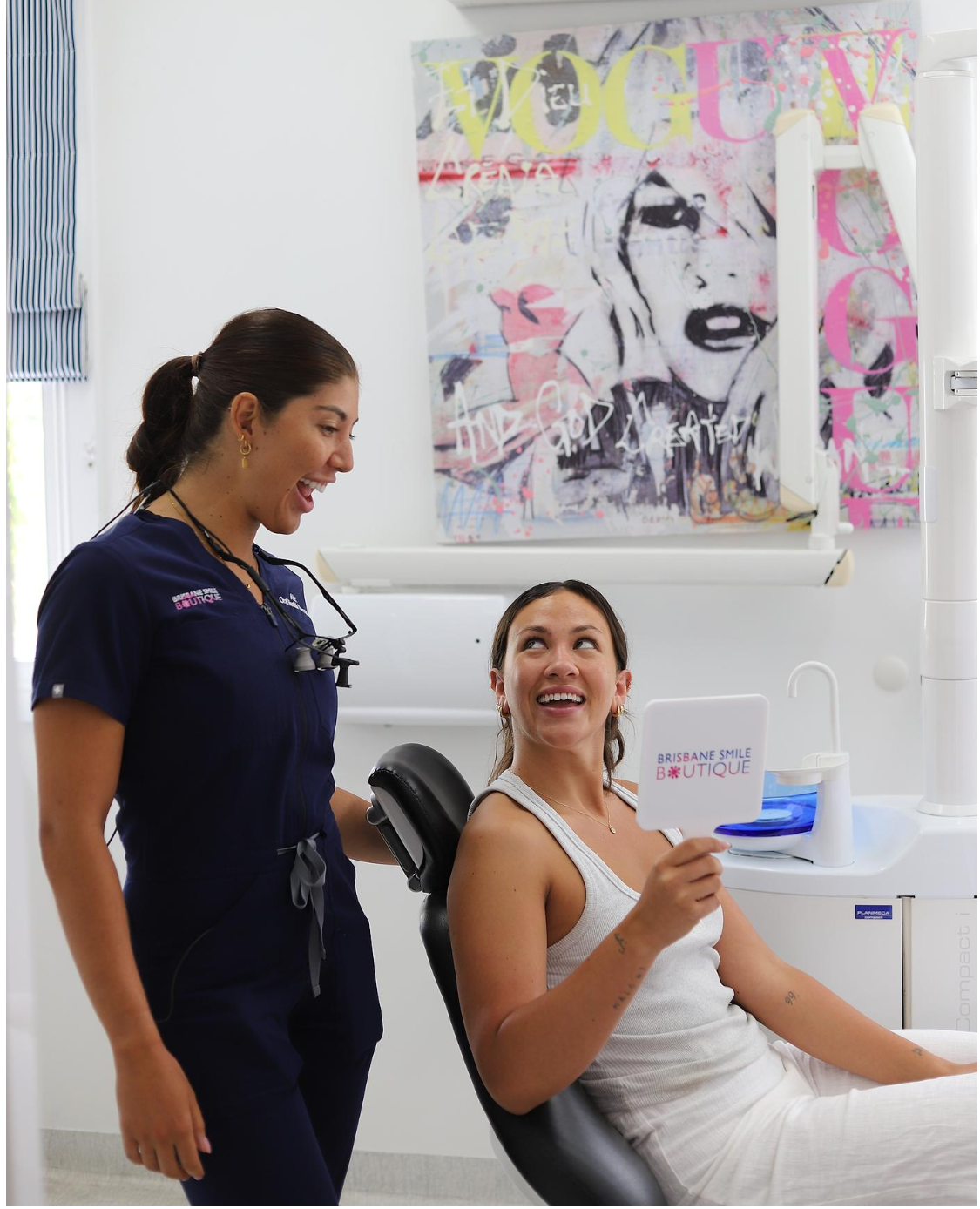Invisalign for Bite Corrections.
It may be the case that teeth or a bite are not aligned correctly, with asymmetry or misplaced teeth, which are causing uneven wear of the teeth, and an incorrect bite pattern can lead to jaw pain. Invisalign is an almost invisible technology which allows gentle straightening of misplaced teeth and corrects all kinds of bite issues.
Invisalign at Brisbane Smile Boutique.
At Brisbane Smile Boutique, Dr Leila Haywood offers Invisalign® treatment to gently and precisely realign your biteusing clear, custom-made aligners. Beyond straightening teeth for aesthetic results, Invisalign can correct functional bite issues such as overbites, underbites, crossbites, and open bites.
Invisalign uses a series of clear aligners that gradually move teeth into better alignment. Unlike traditional braces, Invisalign is discreet, removable, and comfortable—making it ideal for adults seeking bite correction without visible appliances.
Through advanced 3D scanning and bite mapping, Dr Haywood identifies areas of imbalance in how your teeth meet. A personalised Invisalign treatment plan is then created to guide your teeth into a more stable, functional bite position. As the bite improves, symptoms such as jaw tension, uneven wear, or TMJ discomfort can also be reduced.
Invisalign is a powerful tool not just for cosmetic improvements, but also for long-term bite health and jaw stability.
-
If you have spaces between your teeth because of missing teeth, genetics, or teeth that are too narrow for the jaw, Invisalign can help. By closing gaps with clear aligners, each set of aligners is programmed to achieve certain movements so as you make your way through the series, your teeth will shift bit by bit until the spaces are gone and your teeth are aligned correctly.
-
Invisalign works well for creating space so that the teeth can shift to their ideal places. Crowding happens when there is not enough room in the jaw to fit all of the teeth, and they can become twisted, overlap or stick out causing misalignment, and tooth wear and jaw pain in some cases. It is usually caused by an imbalance in the tooth to jaw size relationship. Crowded teeth are harder to clean, which can result in tooth decay and gum disease.
-
An overbite, or overjet, is when the top teeth stick out too far in front of the bottom teeth. An overbite leaves the top front teeth susceptible to injury and can lead to uneven wear and jaw pain, which can be corrected with Invisalign by programming the aligners to shift protruding teeth into their proper places.
-
An underbite is when the bottom teeth are in front of the top teeth when your mouth is closed. It is usually skeletal where the lower jaw is larger than the upper jaw and too far forward. An underbite can make it difficult to chew and can result in uneven wear of the teeth, and jaw pain. If an underbite is not too severe, there is a chance that aligners can improve your smile and bite
-
A crossbite is when some of the bottom teeth sit in front of some of the top teeth, and you can have a back crossbite or a front crossbite depending on which teeth are involved. Sometimes people compensate for a crossbite by shifting their jaw to one side, which can lead to permanent changes in facial structure and tooth positions. If not treated, a crossbite can cause teeth to wear down and may lead to jaw pain. Invisalign can often work to correct some crossbites, related to tooth position.
-
An open bite is when the top and bottom teeth do not touch when the mouth is closed, which makes it hard to bite into foods or to chew properly, and often leads to uneven wear and tear on the teeth, and jaw pain. Tooth movement with aligners can help with open bite correction.

From subtle shifts to complete transformations and bite rehabilitation.
Find the Invisalign tier that fits your smile.
Brisbane Smile Boutique has been redefining Dentistry since 2003.
With a Lifetime of trusted Expertise, our Aesthetic Dentists offer expertise in General and Aesthetic Dentistry, creating Exceptional Smiles with Precision, Artistry, and Care.
Get In Touch
Your smile matters to us.
Reach out through the form for expert advice or to schedule a consultation.
We are here to understand and support your goals.


